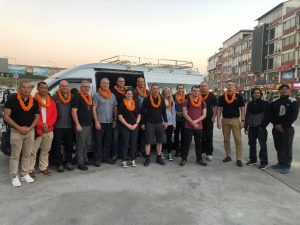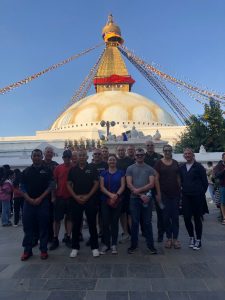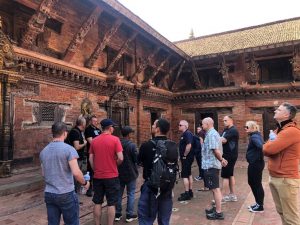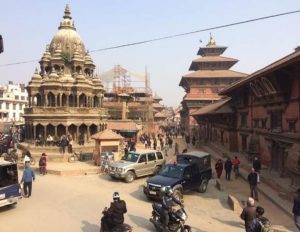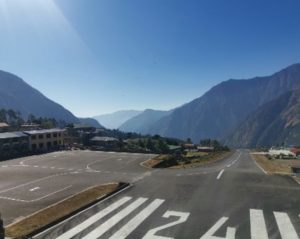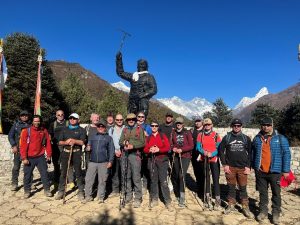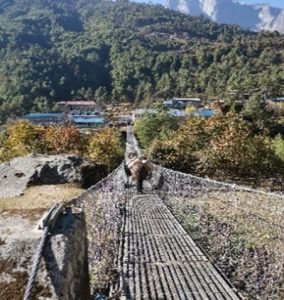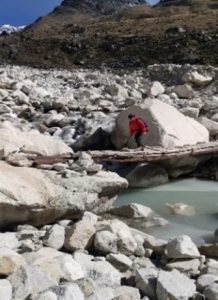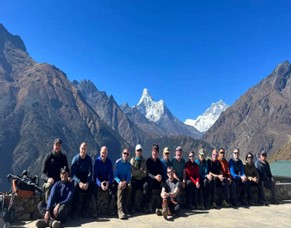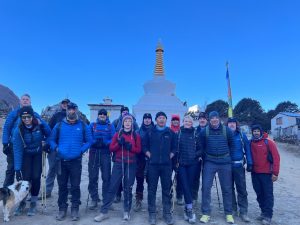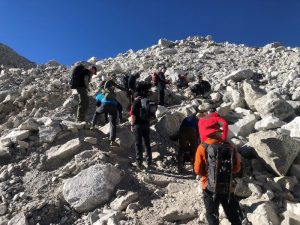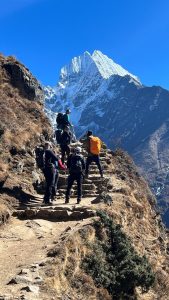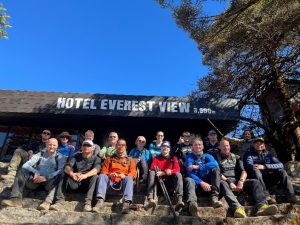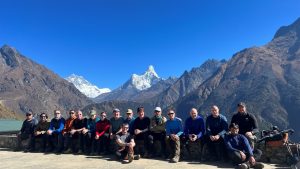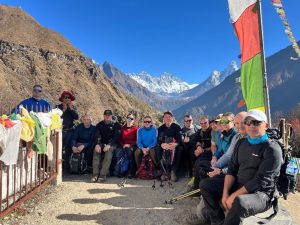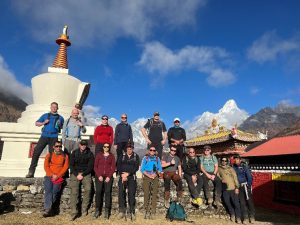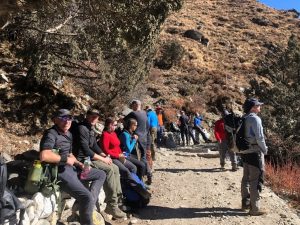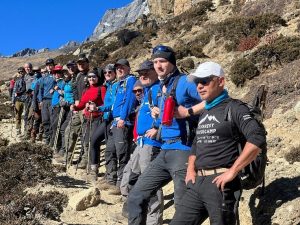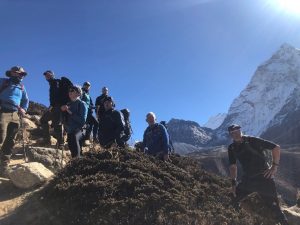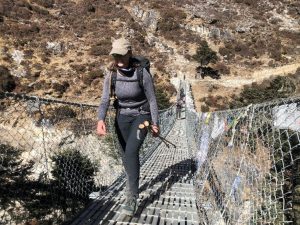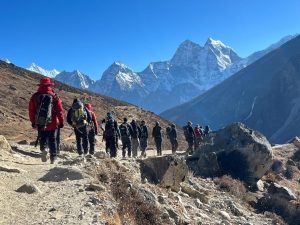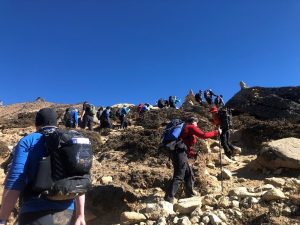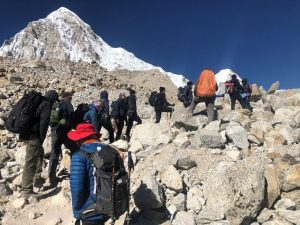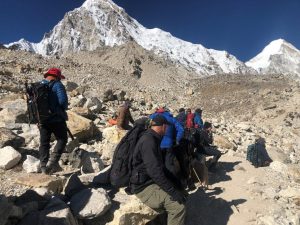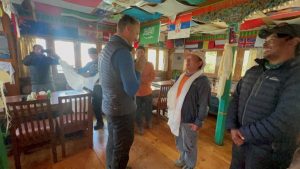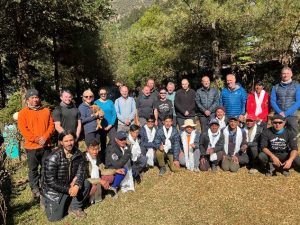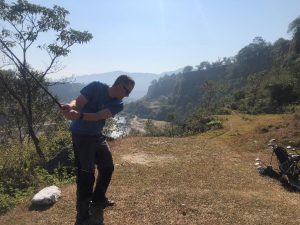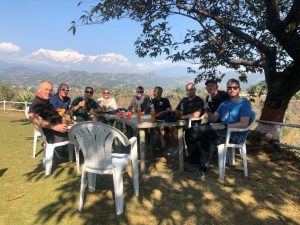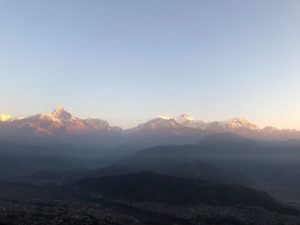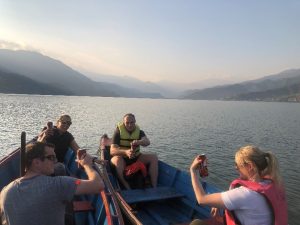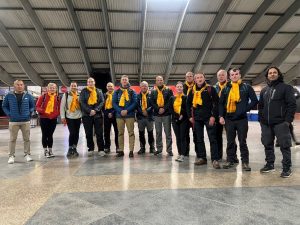Originally planned for 2020 but delayed by two years due to the COVID-19 pandemic, fourteen members of 37 Signal Regiment finally set off for the adventure of a lifetime on 21 November 2022.
PLANNING
Planning and executing an oversees expedition is no mean feat. From funding, medical plans, pre deployment training, sourcing kit and equipment, instructors to the logistics of deploying on the expedition. WO2 Suresh Gurung was expedition lead and worked tirelessly to ensure the expedition took place. Without funding there would simply be no expedition. To that end, enormous thanks needs to go to the Ulysses Trust, West Midlands RFCA and the Royal Signals Charity for providing generous grants.
PRE-DEPLOYMENT
Pre deployment took place at Capel Curig with a focus on mountain fitness, first aid and navigation whilst checking kit and equipment. Day one saw the group go up Yr Wyddfa (Snowdon) with day two on the more remote Moel Siabod.
THE EXPEDITION
After a transfer in Dubai, we flew into Kathmandu – the capital city of Nepal – being met by our Nepali guides who provided us with local expert knowledge and experience. We quickly learned the most important Nepali phrase ‘Namaste’ whilst being gifted with a Khata – a traditional Nepali greeting scarf. From the airport, we transferred to the hotel for the evening experiencing Kathmandu traffic for the first time. There were cars, people and mopeds from every angle yet somehow everyone seemed to know what they were doing. It seemed to be an organised chaos.
We had a day exploring and learning about Kathmandu before the evening was spent trying to pack three weeks of expedition kit into a duffel bag and daysack with a combined weight limit of just 15kg. The reason for the weight limit was the first part of the adventure involved flying into Lukla airport, a remote mountainside airport that comes up on Google as the world’s most dangerous airport, however, in fact it has an exemplary safety record. The reputation is gained due to the short runway on the side of a mountain, which concluded a spectacular flight through the snow-capped Himalayas. The airport is likened to be a static aircraft carrier.
After an introduction to ginger lemon tea – that was to become the staple drink for the rest of expedition – we met our porters who carried our duffel bags with overnight kit, sleeping bags and spare clothes. Then the walking began. Immediately we were hit by the reduced oxygen, quickly losing breath without doing much. Our guides ensured everything was done at a slow pace – a challenge for soldiers used to tabbing at speed. From the airport, we walked through the town of Lukla with its shops and cafes before quickly being immersed in stunning green alpine scenery following the glacial Dhudh Kosi river crossing suspension bridges to our first tea house at Phakding. Accommodation was basic but cosy, however, the temperature dropped and with no heating, the expedition sleeping bags were vital.
We continued the next day to the town of Namche Bazar at 3600 m altitude getting our first glimpse of Everest on the way. Namche Bazar is a surreal place. It is a thriving town with shops, cafes and bars but there are no roads in the Everest Region. Everything is transported either by animals or people. The Sherpas have to be seen to be believed. After an acclimatisation day at Namche, we continued up the trail visiting the temple of Tengboche, staying at Deboche, then Dingboche before going past the Everest memorial on the way to Lobuche.
The scenery was getting rocky and barren as we got higher with the temperature now dropping to minus 12 overnight. From Lobuche, we had a long walk along the Khumbu Glacier to Gorakshep, then onto Everest Base Camp itself at 5346 m – a special moment after 8 days of walking. This is the highest point you can get to safely. The base camp is where professional climbers base themselves for summit attempts. It can take up to 40 days to summit Everest to allow for acclimatisation and there is only a small window of opportunity where the weather means a summit attempt is possible. For us to get all fourteen members of the team to basecamp was a huge achievement especially knowing previous expeditions had not managed to get the whole team there.
The hike back to the tea house at Gorakshep was bit of a blur and by this time, it was clear everyone was suffering quite significantly from the effects of altitude: loss of appetite, headaches, dizziness, headrushes, light headiness and slurred speech. A decision was made that we needed to get to a lower altitude to prevent anyone having any serious issues. As we got lower, we could literally see the increase in energy levels and morale within the group
Over the next few days, we headed back to Lukla where we said our goodbyes to our porters. We flew back out to Kathmandu before conducting a road move to Pokhara for some lower-level activities to conclude the trip including an early morning hike to Sarangkot to watch the sunrise over the Annapurna Mountain range and a walk to an underground waterfall in the middle of the city. Pokhara also allowed us to take in a visit to British Gurkhas Pokhara where we learnt about the proud history of the Gurkhas serving in the British Army – a loyal friendship that formed originally out of battle. From Pokhara, we returned to Kathmandu for a final meal with our guides before returning to the UK.
CONCLUSION
This Exped will live in the memory of those who took part. It gave the members an opportunity to see and experience not just the breadth taking Ex Dragon Everest will live on in the memory of expedition members for years to come through the unique experiences and challenges the expedition presented. Ex Dragon Everest was a initially a test of military planning, administration and logistics. Walking in arduous terrain at altitude in varying climatic conditions for over two weeks all expedition members needed to ensure their personal administration was of the highest level as well as having both the mental and physical resilience to keep going. Leadership was key, with dynamic risk assessments and decision making required to deal with the effect of altitude on the team, and this ensured that all team members achieved the main goal of reaching base camp. The expedition achieved its aims of pushing soldiers out of their comfort zones, developing both individual and team skills that are transferable to their role as soldiers within 37 Signal Regiment. In addition to this, conducting this training in Nepal allowed expedition members to develop communication and cultural awareness, an often overlooked skill for soldiers. This expedition leaves its members with enhanced skills and experience in a unique environment that will benefit the Regiment.
“For me the biggest thing I took away was a sense of gratitude. The warmth and hospitality of the people of Nepal is something special along with a can-do attitude whatever the circumstance. The porters and sherpa on the mountains are absolutely phenomenal, to carry the weight they do, at altitude for long distances on the mountain trail, and they just get on with it. This is something I will look back on when I need motivation, be that for a loaded march or when I have a large inbox of emails, that ability to stay calm, keep going and get on with it. I was also fascinated to see the effect of altitude on myself and the team. Prior to going you get the briefings but nothing really prepares you for when it hits you! The expedition has given me a set unique experiences that have firstly improved my skills as a soldier but also gives me stories to inspire new soldiers in my role as a recruiting and mentoring support officer at the unit.”
Sgt Dave Shaw

